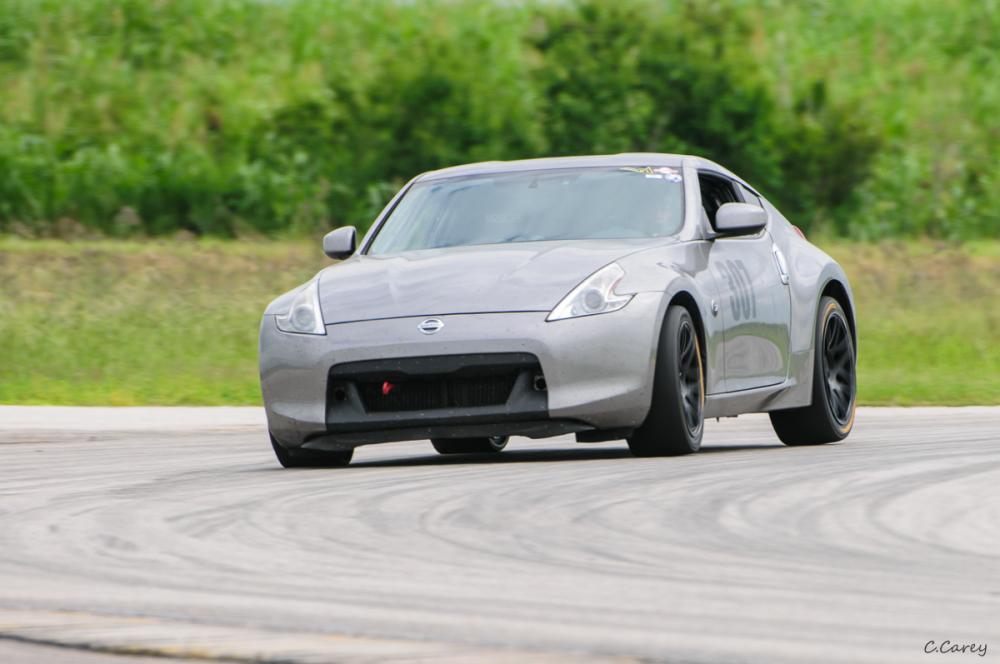So, this is an image a guy shot of my car during the R4C event that's interesting. Look at the inner rear tire here: this is shortly after turning in to the left. I'm mostly likely already on maintenance throttle here given it's T16 (Sugar):

My tire wear has been pretty even at all four corners on the RS3's, but the above is on slicks. With the slicks, the rears are wearing more on the inside and leaving an edge of less-wear at the outside (as if too much negative camber). This pic seems to explain why.
The outer wheel lays down flat, but the inner wheel is nowhere close. (And yeah there's a little of that in the front, too, but it doesn't seem to be enough to dramatically affect tire wear in the net of a lap). I'm inclined to think the camber's fine if the outside tires are doing the right thing, and that getting the inside tire to behave is a matter of suspension...
I didn't make any suspension changes when switching tires, and even on the RS3's I know my springs are kinda weak. The easiest thing to experiment with (and what I should have thought to play with that day) is to stiffen up my damper settings and see if that helps, within reason (but I do need the dampers to move; I tend to run over inside kerbing intentionally a lot!).
I think the real change that's warranted here, though, is to switch to a much stiffer spring rate to help keep the tires pushed down flat. Does that make basic sense here, or should I make other changes first?
The current coilovers are JRZ RS1's (true type in the rear, single-adjustable), and the spring rates that came with them are:
Front: 650 lbs/in (~11.5 kgf/mm)
Rear: 500 lbs/in (~9 kgf/mm)
Like I said, they seemed a little soft for a full-time track car even on streetable tires. What would a good target guestimate set of springs rates be to try out to work better with race slicks (while hopefully not being totally undrivable on the occasion I run some streety tires on the car, or run race wets in the wet)?